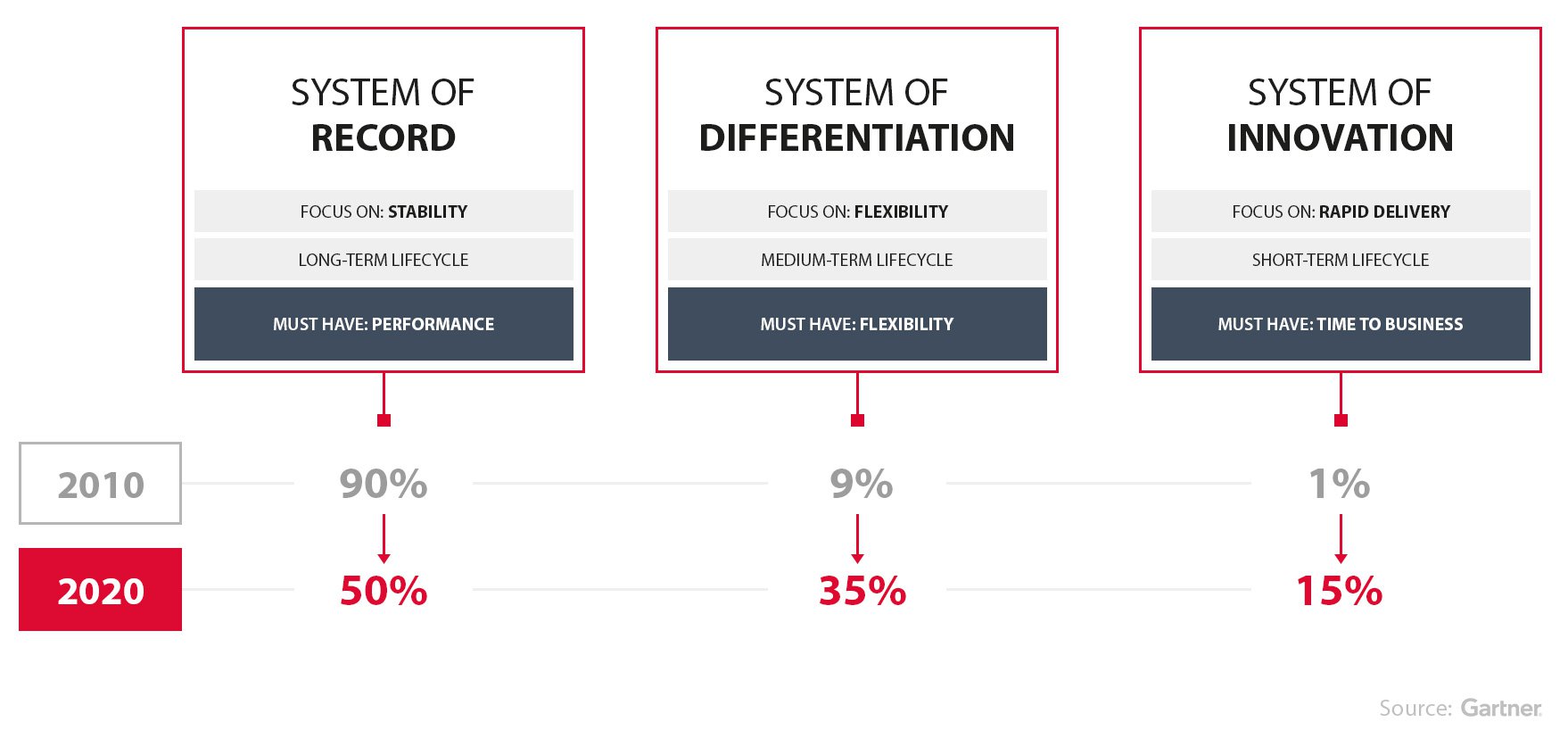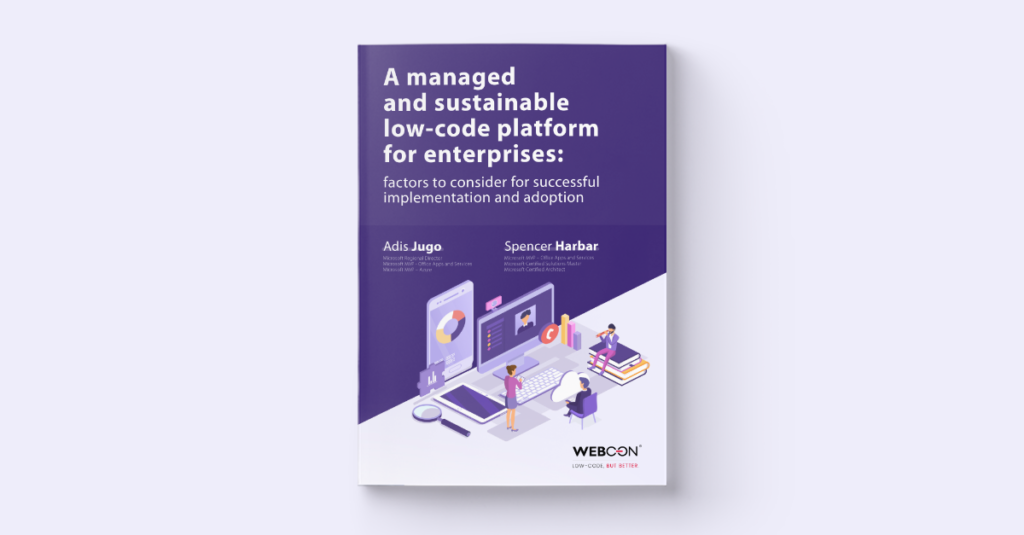As digitalization in business gains momentum, businesses are looking for agile, easily adaptable IT solutions to win and hold the competitive edge.
According to Gartner, two-thirds of all business leaders believe that their companies must pick up the pace of digitalization to remain competitive. To leverage the potential of digital collaboration and productivity at all levels of the organization, companies must adapt their IT strategy to ever-changing business needs. Unfortunately, Gartner also reports that as of 2018, 90% of organizations lack both a modern application integration strategy and an execution ability. This results in unnecessary integration disorder, complexity and costs.
In 2013, Gartner pointed out that 65% of organizational investment budgets were allocated to the maintenance of existing systems, while 25% and 10%, respectively, to growing and transforming them. Even back then. Gartner predicted a shift towards an expected target allocation of 40%, 35% and 25%, respectively.
To describe this coming shift in IT priorities appropriately, Gartner introduced the notion of a pace-layered application strategy. This strategy includes three types of IT systems: systems of record, systems of differentiation and systems of innovation.


Fig. 1: Typically declared corporate IT investment profile, source; Gartner.
The effective execution of this model requires more than simply focusing on systems of record. Organizations need to effectively deliver and adapt systems of innovation and difference as well, which means that off-the-shelf solutions are no longer enough.
No-code software development for instant results & effective change management
Developers have been striving to make the process of creating business applications easier and faster since the 1970s, when Rapid Application Development (RAD) platforms first emerged. Today they are more powerful than ever, and the best of them allow IT departments to deliver scalable, enterprise-grade, and business-critical application solutions without needing to resort to coding. And right on time, too, as the demand for business applications is higher than ever these days.
According to Gartner, as of 2010 DevOps initiatives were causing 50% of enterprises to implement continuous testing. This is where RAD steps in. Unlike other methods, Rapid Application Development environments offer a genuinely iterative and agile approach to building software. A prominent example of a modern RAD solution is WEBCON BPS. Powered by InstantChange™ technology, the platform allows users to create no-code business applications rapidly, while also being able to introduce changes at any point of the application lifecycle. This results in a dramatic drop in IT project related delivery risks.
RAD platforms, like WEBCON BPS, use a wide variety of ready-made components, also called “blocks” and “snippets”. With no code to write and test, development time is minimized while development efficiency is maximized. Elements remain customizable throughout the development process, allowing you to meet shifting project requirements with ease. In RAD, the focus is on delivering projects in iterations, with the ability to implement constant adjustments to meet the requirements of the client. This enables management to easily evaluate project results and keeps them in line with ever-shifting business requirements.
True change management is a game-changer
Gartner experts estimate that only 10% of enterprises successfully execute their strategies. Practically speaking, even the best management decision amounts to nothing if its execution fails. What builds a genuine business edge these days are innovative processes, supported by change-ready innovative software that can be modified within hours, and not days or weeks.
With the ability to deliver process-centric business applications rapidly, organizations gain more control over their business processes, better coordination of activities, and better use of information. If you are agile enough to change quickly, you can bridge the gap between IT and business, and maintain a competitive edge.







